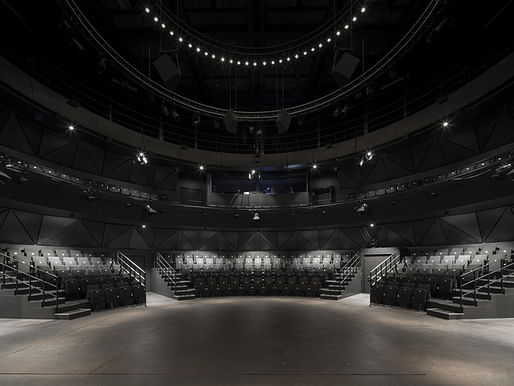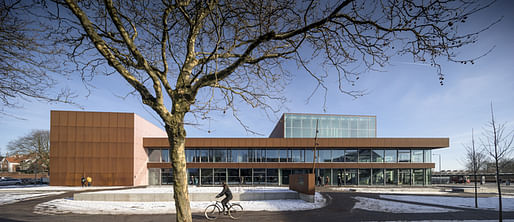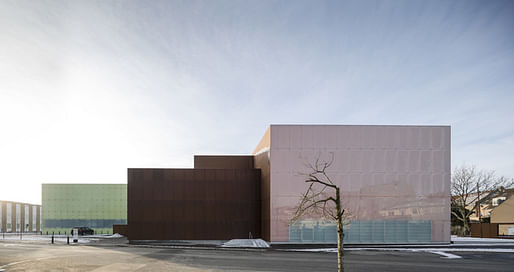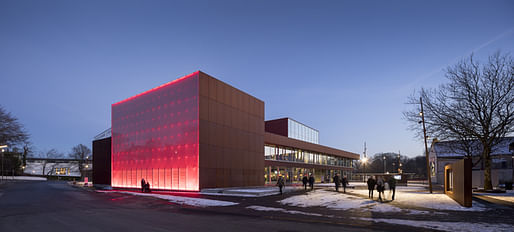
One of the oldest towns in Denmark, Hjørring, has just received a brand new theater - the first to be built outside the Danish capital, Copenhagen, in over a century. Designed by the democratic architecture practice Schmidt Hammer Lassen Architects, the 4,200 m2 cultural facility hosts a Music hall, Black Box, Rehearsal hall and 430-seat flexible hall including an “in-the-round” theater. As a multifunctional complex, the building also houses offices, a spacious lobby area, a café and backstage area with workshop and dressing rooms. The small town with a population of 25,000 has been growing in recent years and the architects are hoping the new Vendsyssel Theater will become a dynamo for the entire region’s cultural life. This wish is already shaping up to be true as the theater premiered to an entirely sold out season.

From the architects:
The building appears as a composition of cubic blocks. The warm rusty red corten steel facades correspond with its surroundings during the day, whilst the LED backed frosted glass facades illuminate in various colors during the evening; thus, creating an aesthetic link between the town, the front plaza and the theatre building.


"It is our ambition that the building will manifest itself as a new living organism in the cityscape," says Founding partner John Foldbjerg Lassen. "It is a building which stands by its cultural significance and which dares to be different without taking focus away from the town's existing qualities."
Architectural, functional and experiential emphasis has been placed on five main themes: Anchoring in the town, transparency, functionality, flexibility and materiality. The result is a striking building, which relates pragmatically to its function and which invites both active use and quiet breaks.


The approach to the building's design has been a pragmatic view of culture as an opportunity and experience for all. Therefore, space has been created for both scheduled and ad hoc events outside at the plaza, inside the foyer and on the grand staircase where visitors can choose to be spectators or even participate in the activities.
Inside, an open plan solution ensures visual and physical connections across the building. The boundaries between publicly accessible areas and the more traditional theatre functions are blurred.

"We've designed emphasis on the interaction between artists and spectators. Inside, all the major halls can be opened to the foyer, the use of glass and windows in different rooms creates visual connections and the performers can get a glimpse of the public from their lounge on the top level."
No Comments
Block this user
Are you sure you want to block this user and hide all related comments throughout the site?
Archinect
This is your first comment on Archinect. Your comment will be visible once approved.